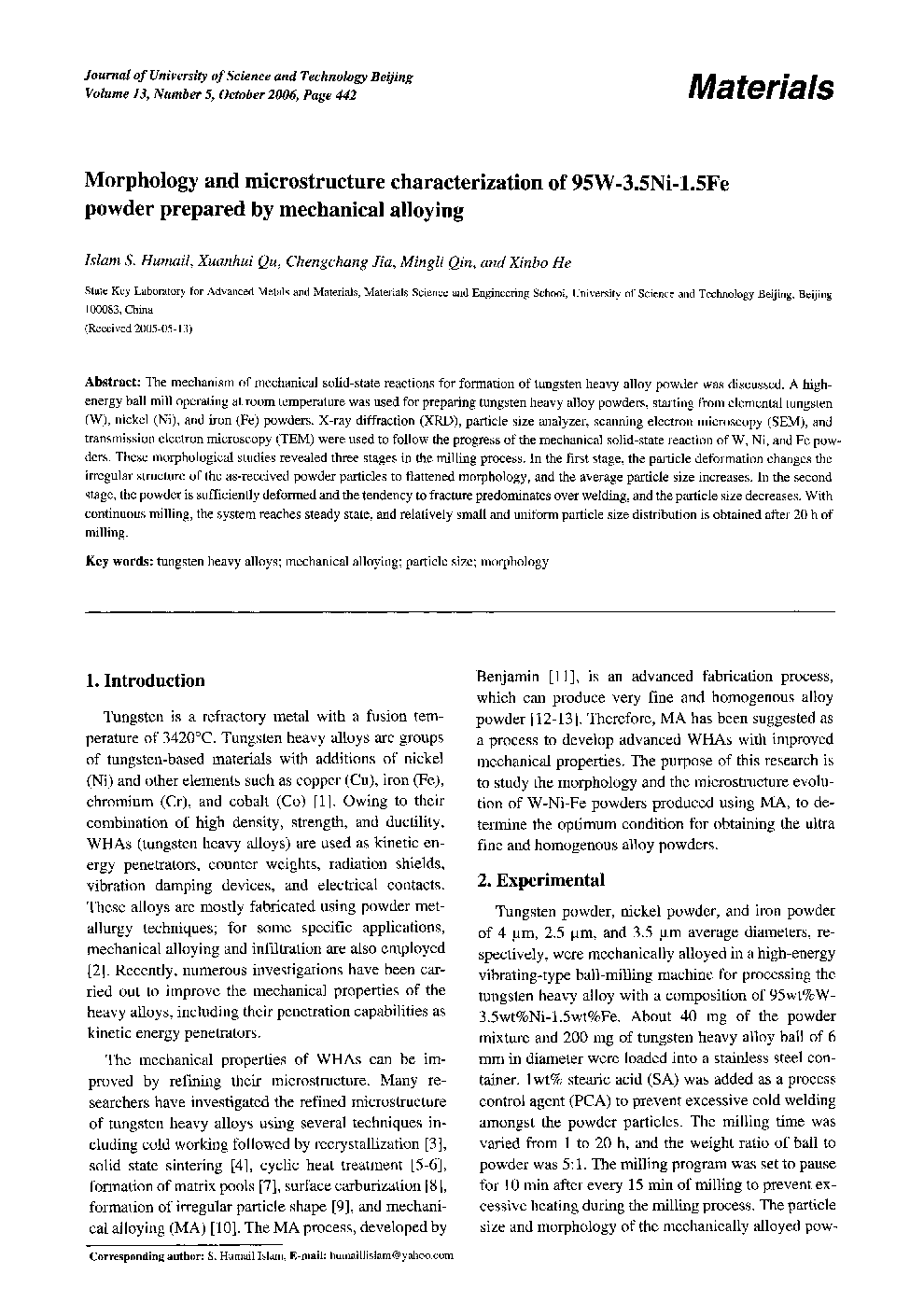| Article ID | Journal | Published Year | Pages | File Type |
|---|---|---|---|---|
| 1630720 | Journal of University of Science and Technology Beijing, Mineral, Metallurgy, Material | 2006 | 4 Pages |
Abstract
The mechanism of mechanical solid-state reactions for formation of tungsten heavy alloy powder was discussed. A high-energy ball mill operating at room temperature was used for preparing tungsten heavy alloy powders, starting from elemental tungsten (W), nickel (Ni), and iron (Fe) powders. X-ray diffraction (XRD), particle size analyzer, scanning electron microscopy (SEM), and transmission electron microscopy (TEM) were used to follow the progress of the mechanical solid-state reaction of W, Ni, and Fe powders. These morphological studies revealed three stages in the milling process. In the first stage, the particle deformation changes the irregular structure of the as-received powder particles to flattened morphology, and the average particle size increases. In the second stage, the powder is sufficiently deformed and the tendency to fracture predominates over welding, and the particle size decreases. With continuous milling, the system reaches steady state, and relatively small and uniform particle size distribution is obtained after 20 h of milling.
Related Topics
Physical Sciences and Engineering
Materials Science
Metals and Alloys
Authors
Islam S. Humail, Xuanhui Qu, Chengchang Jia, Mingli Qin, Xinbo He,
